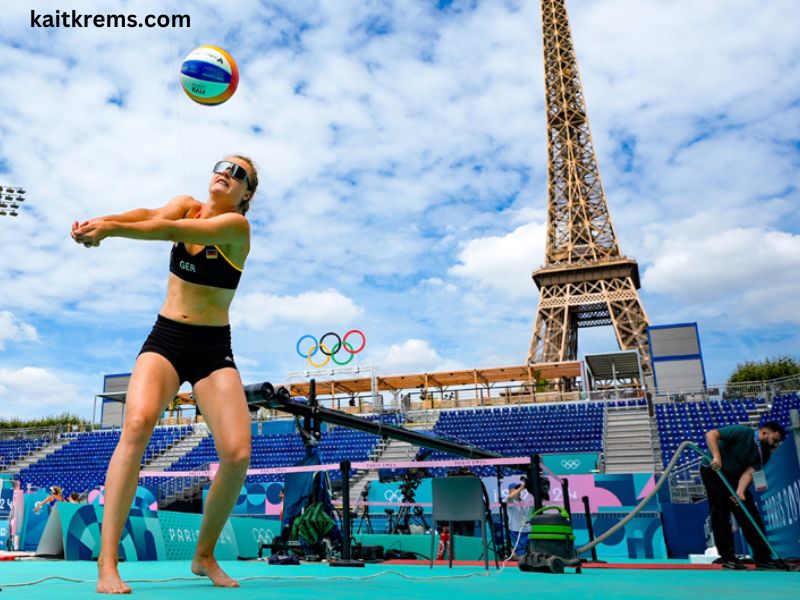The Summer Olympics, an international multi-sport event, brings together the finest athletes from around the globe to compete in various sports. Organized by the International Olympic Committee (IOC), the Summer Games have evolved since their inception in 1896, expanding in both the number of participating nations and sports. Held every four years, these Games are a celebration of human athleticism and competition, showcasing the talents and perseverance of athletes who strive for Olympic glory.
In this article, we’ll explore the wide range of sports featured in the Summer Olympics, from traditional disciplines like athletics and swimming to newer additions like skateboarding and surfing.
Athletics
Athletics, or track and field, is the quintessential Olympic sport and has been part of the Games since their modern inception in 1896. It encompasses a variety of running, jumping, throwing, and walking events. The most iconic of these is the 100-meter sprint, where athletes compete to be crowned the fastest person in the world. Other notable events include the marathon, pole vault, long jump, shot put, and the 4×100 meter relay.
Track and field events are divided into three main categories:
- Track events (sprints, middle-distance, long-distance races, hurdles, relays),
- Field events (jumping and throwing events),
- Combined events like the decathlon and heptathlon, which test overall athletic ability across multiple disciplines.
Swimming
Swimming has also been a cornerstone of the Summer Olympics since 1896. The sport features four primary strokes: freestyle, backstroke, breaststroke, and butterfly. Swimming events vary in length, ranging from sprints like the 50-meter freestyle to endurance races like the 1,500-meter freestyle.
Swimmers compete in individual races, team relays, and medleys, where each swimmer performs a different stroke. The sport has produced some of the greatest Olympic athletes of all time, including Michael Phelps, who holds the record for the most Olympic gold medals.
Gymnastics
Gymnastics is another traditional Olympic sport that captivates audiences with its blend of grace, power, and precision. Olympic gymnastics is divided into three categories:
- Artistic Gymnastics: Perhaps the most well-known form of gymnastics, it involves routines on apparatuses like the balance beam, vault, uneven bars, and floor exercises for women, and the pommel horse, rings, and parallel bars for men.
- Rhythmic Gymnastics: This discipline, exclusive to women, combines dance, acrobatics, and apparatus manipulation (hoops, ribbons, balls, clubs) into highly choreographed routines.
- Trampoline: Introduced in 2000, trampoline gymnastics involves athletes performing flips, twists, and somersaults while bouncing on a trampoline.
Cycling
Cycling is a multi-discipline sport that has been part of the Olympics since 1896. Olympic cycling is divided into four major categories:
- Track Cycling: Competitors race in a velodrome in events like the sprint, keirin, and team pursuit.
- Road Cycling: Road races and time trials take place on outdoor courses, testing athletes’ endurance and speed.
- Mountain Biking: Introduced in 1996, this event sees athletes racing over rough and rugged terrain.
- BMX Racing and BMX Freestyle: BMX made its Olympic debut in 2008. BMX racing is a fast-paced event with racers competing on dirt tracks, while BMX freestyle, introduced in 2020, involves performing tricks and stunts.
Basketball
Basketball has been a staple of the Summer Olympics since 1936, with both men’s and women’s tournaments. The sport is fast-paced and involves teams of five players competing to score points by shooting the ball through the opponent’s hoop. The United States has traditionally dominated Olympic basketball, thanks to the participation of NBA and WNBA stars.
In 2020, a new variation, 3×3 basketball, was introduced, featuring smaller teams, shorter games, and a half-court setup. This version is faster-paced and has grown in popularity, providing an exciting addition to the Olympics.
Soccer (Football)
Soccer, known as football in most parts of the world, has been an Olympic sport since 1900 for men and 1996 for women. Unlike the FIFA World Cup, Olympic men’s soccer is restricted to under-23 teams, with a few exceptions for overage players. Women’s soccer, on the other hand, has no such age restrictions and often features the top players in the world.
The tournament format is similar to other international competitions, with teams competing in group stages before progressing to knockout rounds.
Tennis
Tennis was part of the inaugural modern Olympics but was removed after 1924, only to be reinstated in 1988. Olympic tennis features singles and doubles events for both men and women, as well as mixed doubles. The sport draws many of the world’s top tennis players, making it one of the most prestigious competitions outside of the Grand Slams.
Notable Olympic champions include Serena Williams, Rafael Nadal, and Novak Djokovic, adding to their already illustrious careers.
Volleyball and Beach Volleyball
Volleyball made its Olympic debut in 1964, and beach volleyball was added in 1996. Indoor volleyball is played with two teams of six players each, competing to hit the ball over the net and score points by landing it on the opponent’s side of the court.
Beach volleyball, played on sand, features teams of two and has a more relaxed yet competitive atmosphere. The sport has become one of the most popular Olympic events, particularly in the Summer Games, thanks to its dynamic gameplay and scenic outdoor settings.
Boxing
Boxing has been an Olympic sport since 1904, with men competing across various weight classes. Women’s boxing was introduced in 2012, and like their male counterparts, female athletes also compete in different weight divisions. Olympic boxing features an amateur format, with shorter bouts and athletes wearing headgear for protection.
The sport has launched the careers of some of the most famous boxers in history, including Muhammad Ali, who won gold in 1960.
Wrestling
Wrestling is one of the original sports of the ancient Olympic Games and has been a part of the modern Olympics since 1896. There are two primary styles of wrestling in the Olympics:
- Freestyle Wrestling: In this form, wrestlers can use their entire body to execute holds and throws.
- Greco-Roman Wrestling: This style forbids holds below the waist, focusing on upper-body strength and techniques.
Both styles require immense physical strength, strategy, and agility, and are among the most physically demanding sports in the Olympics.
Martial Arts: Judo, Taekwondo, and Karate
Martial arts hold a significant place in the Olympics, with judo, taekwondo, and karate among the featured sports.
- Judo: Introduced in 1964, judo is a Japanese martial art that emphasizes throws and submissions. Competitors earn points by executing clean throws, immobilizing opponents, or forcing them to submit.
- Taekwondo: This Korean martial art made its debut in 2000 and focuses on kicks and punches. Fighters earn points for landing strikes to the body and head.
- Karate: Karate made its debut in the 2020 Tokyo Olympics. It features two disciplines: kata, where athletes perform a series of offensive and defensive movements, and kumite, a sparring event where competitors face off in a point-based system.
Equestrian
Equestrian events have been part of the Olympics since 1900 and are unique in that they involve both a human and an animal athlete. The three main equestrian disciplines are:
- Dressage: Often described as “horse ballet,” dressage involves horse and rider performing a series of predetermined movements.
- Jumping: Horse and rider must navigate a course of obstacles, with penalties for knocking down bars or refusing jumps.
- Eventing: A combination of dressage, cross-country, and jumping, testing the versatility and endurance of horse and rider.
New Additions: Surfing, Skateboarding, and Sport Climbing
In recent years, the Olympics have embraced sports that appeal to younger audiences and reflect contemporary athletic trends:
- Surfing: Making its debut in 2020, surfers compete in heats, judged on their ability to catch and perform maneuvers on waves.
- Skateboarding: Another 2020 addition, skateboarding includes street and park events, where athletes perform tricks on urban-style obstacles or ramps.
- Sport Climbing: Climbers compete in three disciplines: speed climbing, bouldering, and lead climbing, testing their strength, agility, and strategy.
Conclusion
The Summer Olympics represent a celebration of the vast diversity of sports from around the world, showcasing athletes’ talents across traditional and emerging disciplines. From the elegance of gymnastics to the thrill of skateboarding, each sport brings something unique to the Olympic experience. With each edition of the Games, new sports may be added, continuing to evolve the world’s greatest sporting event. Whether you’re a fan of mainstream sports like basketball or intrigued by niche events like equestrian dressage, the Summer Olympics offers something for everyone.






